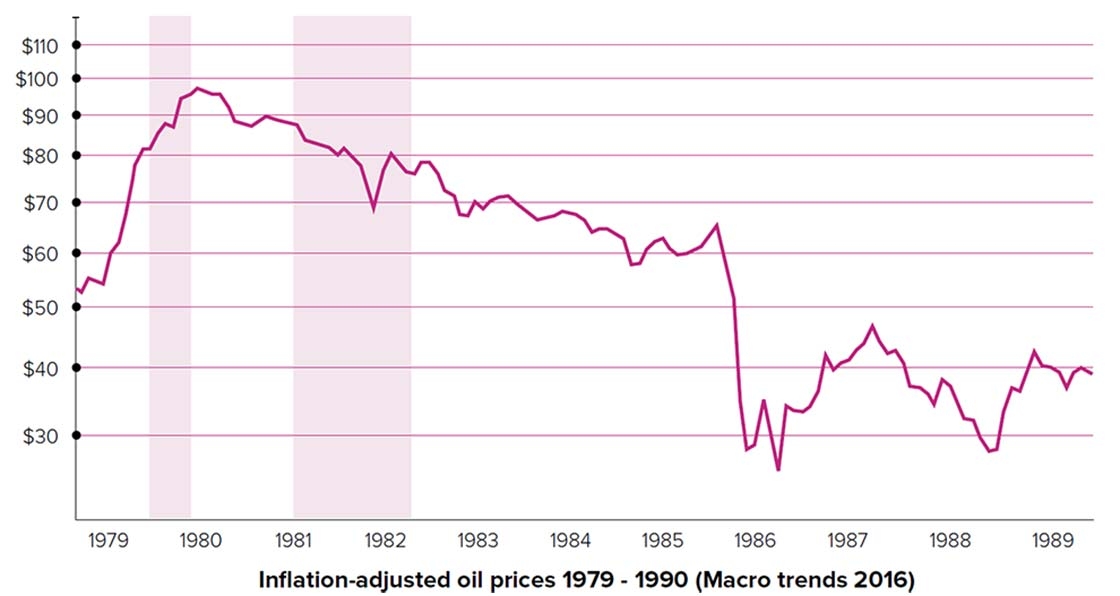
- Blogs
- Posted
A brave new world: Oil and architecture
Innovations in low energy building were spurred in the 20th century by oil crises, but the political impetus for meaningful change receded once the crises ended, explains Dr Marc Ó Riain, bringing an attendant failure to set meaningful building regulations.
It always shocks me that Ireland did not manage to introduce mandatory building standards till 1992, when the UK had standards soon after the great fire of London 1667 and first published enforceable national building energy regulations in 1964. The relationship between the lobbyists, government policy, geo-political/economic factors and oil prices have long been intertwined and interrelated. External factors have changed our priority toward energy consumption in buildings, making us as consumers more aware of building energy costs or less concerned with them when designing our buildings. What is clear is that regulations play a seminal role in setting a baseline for investment decision-making and the absence of regulations (of adequate enforcement) would allow for the unfettered priorities of the market to drive down standards, which can lead to the disasters we have seen illustrated in Ireland by high profile building failures at developments such as Priory Hall, Longboat Quay and Millfield Manor.
Political priorities since the first oil crisis in 1974 have led to national policy positions that have undermined advances in renewable technologies, mandatory standards, and financial business cases for low energy buildings.
The devastation of World War 2 blitz bombing created an effective tabula rasa in the cities of Europe. Post war reconstruction was limited by the shortage of experienced bricklayers and the slow nature of traditional building techniques, resulting in a shift towards modular prefabricated systems which became synonymous with social high rise housing in London and its new towns. The battle “between the hards and the softs…the Corbusian rationalists and these Swedish empiricists” (Kite 2010) was won by the modernists who embraced the new construction technique “with the use of concrete, steel and glass…to be ugly in its mechanical simplicity“ (Sant ‘Elia 1914). The clear structural rigor and tectonics of the steel frame metal and brick campus building at IIT during the war by Mies van der Rohe, would be supplanted by more cost-effective and brutalist concrete frames and external cladding panels in the UK in the 1950s best characterised by some of the buildings on the redeveloped South Bank for the Festival of Britain (1951). A common feature of many of these post-war concrete buildings is a high level of strip single glazing, exposed concrete and a lack of insulation, with high amounts of heat gain and loss.

(clockwise from top left) Cars queuing for petrol in London during the 1979 oil crisis; the Saskatchewan Conservation House in Canada, one of the pioneering low energy houses of the 20th century, was built in 1977; constructed even earlier was the Solar 1 house at MIT, which was built in 1939, and featured 33 sqm of solar thermal panels and a huge storage tank to meet its heating demand.
In 1963, the Irish government introduced a Planning Act to control unfettered development, but failed to introduce building regulations. A low level of political, consumer or design priority was placed on energy in buildings as oil was abundantly cheap up to the winter of 1973.
In October 1973, as people were filling their home heating tanks with oil at $30 per crude barrel (inflation adjusted), an Egyptian and Syrian offensive against Israel resulted in the Yom Kippur War. The US supplied arms to the Israelis and Arab nations responded with the OAPEC coordinated oil embargo against the West (Merrill 2007), resulting in long queues for petrol, fuel rationing and the exhaustion of national reserves. The cost of a barrel of oil quadrupled to an inflation adjusted €120 a barrel.
"Political priorities since the first oil crisis in 1974 have undermined advances in renewable technologies, mandatory standards, and financial business cases for low energy buildings."
The embargo highlighted national dependencies of imported fuels, the importance of oil reserves, economic exposure and made the consumer suddenly realise the cost of heating in their uninsulated buildings. Long queues at petrol pumps and high home heating oil costs brought considerable pressure on governments to develop policies to mitigate against the repetition of such an embargo on their economies.
In February 1974, the majority of the western world’s oil consuming countries (including Ireland and the UK) came together in Washington at an energy conference led by the US organised by Henry Kissinger. The conference developed common policies on energy production and conservation, alternative energy sources, research and development, emergency sharing, financial co-operation and energy security and led to the foundation of the International Energy Agency later that year in Paris.
The formation of the IEA cemented UK and US policies of energy independence, shifting their focus to increasing oil and gas exploration, along with the development of nuclear power stations. Denmark by contrast invested heavily in wind, district heating and energy conservation research. Such policies led to the first zero energy house being built in 1975, in Copenhagen, based primarily on energy conservation and seasonal solar water heating. The US would introduce ‘weatherisation’ programs, for draft sealing and insulation for existing buildings and the UK introduced grants for attic insulation in the late 1970s. Ireland followed suit twice with successful attic insulation incentives in the early 1980s.
Architectural design principles for low energy buildings and renewable technologies were informed initially by Solar 1 at MIT as early as 1939, with a small number of architects developing optimally oriented houses for solar heating using trombe walls and seasonal water storage tanks through the 1960s. However, the passive house standard which we know today was initially informed by these early solar houses, depended more on the developments after the first oil crisis. Technical developments and research projects such as the Phillips House (Aachen, 1974), Bentley’s Double Wall House (patented 1976, USA), Schick’s Lo-Cal House (Illinois, 1976) and the Saskatchewan Conservation House, Canada (1977) would become baseline precedents for the 1988 standard. Building retrofit technologies and thermal bridging pioneered by the Princeton House Doctors at the Twin Rivers Retrofit between 1976-1979, established that insulation and airtightness gave far better payback periods than active systems like seasonal storage tanks.
The sheer volatility of imported energy prices from 1974 to 1986 had a serious impact on industry, economy and politics. The cost of oil and the security of its supply became a key driver of international political policies informed by the IEA. The volatility of prices brought the cost of energy consumption into stark clarity and the consequences of political inaction in building regulations in Ireland were addressed for the first time, albeit on an elective basis.
In 1976, Ireland introduced elective building regulations and the UK revised its mandatory building energy standards. Although Irish U-Values (below) were more onerous than the UK regulations (below), critically they were not mandatory and not applicable to existing buildings.

By the late 1970s a body of knowledge in low and zero energy building had developed, supported by micro industries providing renewable technologies such as solar panels, seasonal storage tanks, heat pumps, district heating, and insulation. The demand for lower energy buildings was supported by high crude oil prices, which peaked at the equivalent of $117 per barrel following the Iranian revolution in 1979.
However, the arrival of Thatcher and Reagan to power in 1979 and 1980 resulted in a collapse of oil prices over a six year period, destroying the demand for low energy buildings and destroying the fledgling renewable energy industry. As oil prices fell, architects shifted their focus away from building performance as demand dried up. In 1988, inspired by the early precedents, Wolfgang Feist and Bo Adamson developed the passive house standard in the backdrop of historically low energy prices. Spurred by a nightclub fire tragedy, Ireland would finally introduce mandatory building standards in 1992.
In the next issue I’ll examine the development of mandatory building standards in Ireland, the EU Energy Performance of Buildings Directive and the potential for UK and Irish governments to address climate change through built environment initiatives.





